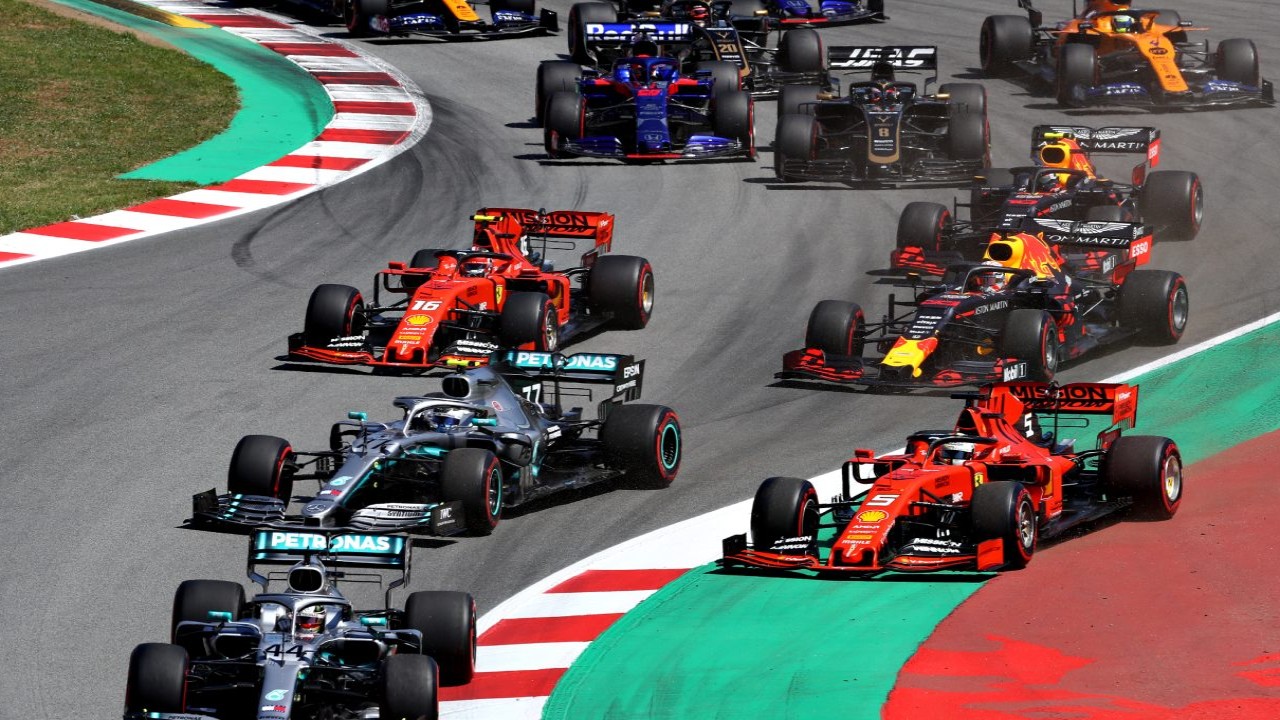How Much Does An F1 Car Cost? - Most Expensive F1 car and F1 Car Parts
How Much Does An F1 Car Cost? Get to know about Most Expensive F1 Car Parts, F1 Tire Cost and more on Pinkvilla.

Formula 1 is a spectacle of speed, technology, and, notably, significant financial investment. The costs associated with building, maintaining, and racing an F1 car are astronomical, often running into the millions.
This article delves into the financial aspect of Formula 1, breaking down the cost of an F1 car, from its most expensive parts to the tires and even touching upon the speed these engineering marvels can achieve.
How Much Does An F1 Car Cost?
An F1 car is a marvel of modern engineering, designed to push the limits of speed, agility, and performance. An F1 car costs around $15.9 million. This estimate can fluctuate between $12 to $15 million, depending on the car's specific setup and components.
For instance, a set of wings alone might set a team back by $200,000, while the steering wheel, a critical piece of equipment loaded with technology, costs about $50,000. The engine, the heart of the car, commands an eye-watering $10.6 million, highlighting the immense resources dedicated to achieving excellence on the track.
For the 2022 season, teams had a budget cap of $145.6 million, covering the construction of the car among other expenses, excluding driver salaries and a few exceptions. This cap was introduced to ensure a more level playing field among teams, but the construction of a single F1 car still requires a significant portion of this budget.
Most Expensive F1 Car Parts
The cost distribution within an F1 car reveals the prioritization of performance and reliability. The engine tops the list as the most expensive component, with a single turbocharged 1.6-litre V6 engine valued at approximately $10.6 million. The chassis and gearbox are also among the priciest parts, costing around $700,000 and $350,000, respectively.

Technology plays a crucial role in the performance of F1 cars, with teams spending around $50,000 on a steering wheel, which serves as a critical source of data and control for the driver. Even the safety features, such as the halo, which protects drivers in the event of an accident, come with a significant cost, priced at around $17,000. The aerodynamic wings, both front and rear, total $250,000 due to their custom designs for each team.
F1 Tire Cost - How Much Do F1 Tires Cost?
Tires are critical to an F1 car's performance, influencing grip, speed, and safety. A set of four tires costs about $2,700, with teams requiring up to 13 sets per driver for a race weekend. This necessity translates into a substantial expense of over $35,000 per driver for each event. However, teams do not pay this amount directly to Pirelli, the tire supplier; instead, the FIA organizes annual package deals that provide tires to all teams.
Most Expensive F1 Car
While the operational costs of F1 cars are staggering, the value of these vehicles can escalate further once they leave the track. Historical models, especially those associated with legendary drivers and championship victories, can fetch millions at auction.

For example, Juan Manuel Fangio's 1954 championship-winning Mercedes sold for around $30 million, setting a record for the most expensive F1 car ever sold. This sale highlights not only the historical value but also the significant financial investment associated with Formula 1, past and present.
How Fast Do F1 Cars Go?
F1 cars epitomize the extreme capabilities of automotive engineering, capable of reaching speeds exceeding 220 mph, with the ability to accelerate from zero to 60 mph in just 2.6 seconds. The official fastest speed recorded by an F1 car is approximately 231.46 mph, achieved by Valtteri Bottas at the 2016 Mexican Grand Prix.
To conclude, the awe-inspiring performance of Formula 1 cars is matched by their hefty price tags. As Henry Ford poignantly stated, "Auto racing began five minutes after the second car was built." The essence of Formula 1, encapsulated in its cars, continues to push the boundaries of what's possible.
Racing not just against competitors, but against the very limits of possibility. Are you excited for the 2024 F1 season?





 JOIN OUR WHATSAPP CHANNEL
JOIN OUR WHATSAPP CHANNEL






























































